
Silicon carbide for the foundry industry
Silicon carbide is used as an alloying element, which simultaneously provides silicon and carbon in cast iron.
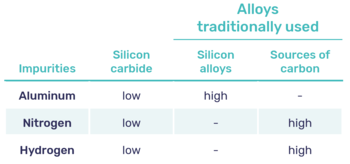
The metallurgical market is made up of the foundry and steel industries. Both industries are constantly looking for alternative raw material to improve the performance of their processes and the quality of their finished goods. The challenge is to find high-quality raw materials at a competitive price.
The high purity of metallurgical silicon carbide reduces the level of harmful waste elements contained in other materials. In this context, silicon carbide becomes a good alternative as a source of silicon and carbon in cast iron.
SIKA® silicon carbide for the foundry industry
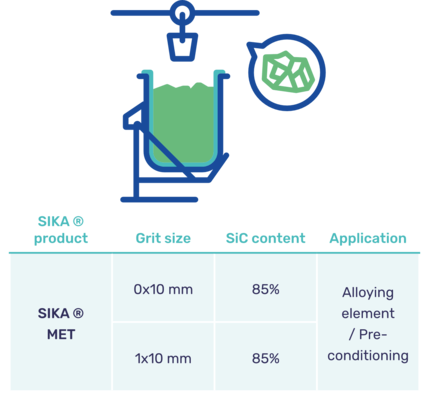
Induction furnace
Silicon carbide provides silicon and carbon to the melt in induction furnaces.
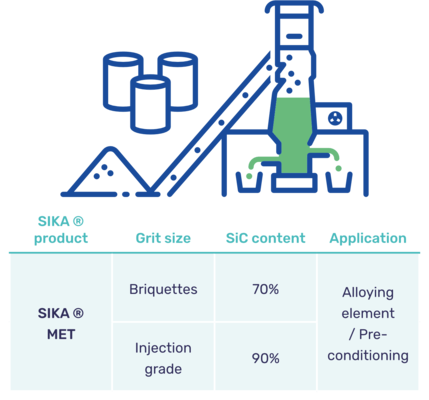
Cupola furnace
Briquettes of silicon carbide add silicon and carbon into the cupola furnace providing deoxidizing and higher melt rate due to the lower consumption of coke.
Advantages of silicon carbide in the foundry
Low content of impurities
Aluminium, nitrogen and hydrogen are elements that in excess can cause defects such as pinholes (porosity in castings). Silicon carbide is naturally low in these impurities when compared to other sources of silicon and carbon.
Cost reduction
Since silicon carbide simultaneously provides silicon and carbon in cast iron, two raw materials, one as a source of silicon and one as a source of carbon, can be replaced by silicon carbide. This leads to a cost reduction in the cast iron process.
Increased nucleation
It has been demonstrated by several technical papers that silicon carbide increases the nucleation of the cast iron, resulting in an increase in the number of nodules (Fig. 1) and eutectic cells in ductile or grey cast iron.
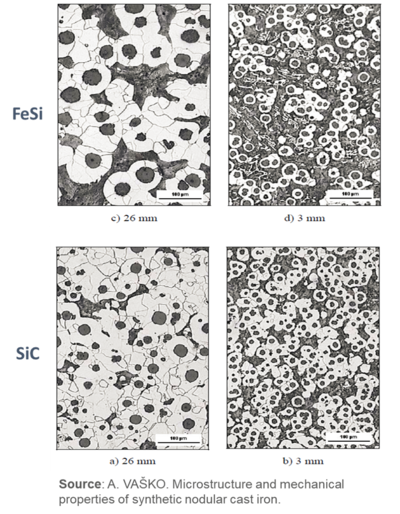
Nucleating effect in cast iron
Silicon carbide has nucleating or preconditioning properties that result in a better quality of cast iron.
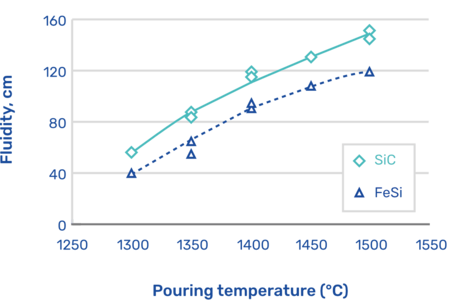
MORE FLUIDITY
The use of silicon carbide in cast iron can improve the fluidity of the molten metal, making it easier to fill the liquid metal into the mold in complex shapes.
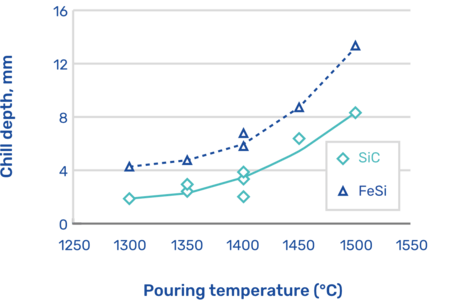
LOWER CHILL DEPTH
The use of silicon carbide in cast iron leads to a lower chill depth, allowing for more precise control over the solidification process in thinner wall thicknesses with a more homogenous distribution of graphite.
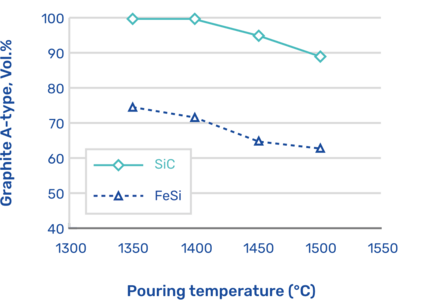
MORE GRAPHITE A-TYPE FORMATION
Silicon carbide promotes the formation of A-type graphite in cast iron, which is characterized by its fine, uniformly distributed structure and leads to improved mechanical properties such as higher strength and ductility.
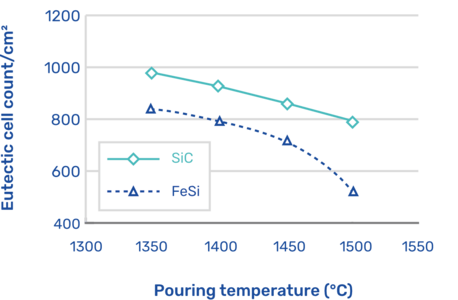
MORE EUTECTIC CELLS
Silicon carbide helps create more eutectic cells in cast iron, which leads to the formation of A-type graphite. This type of graphite is evenly distributed and improves the mechanical properties, such as strength and ductility, of the cast iron.
Reference: K. Edalati, F. Akhlaghi∗, M. Nili-Ahmadabadi, “Influence of SiC and FeSi addition on the characteristics of gray cast iron melts poured at different temperatures”, Journal of Materials Processing Technology 160 (2005) 183–187

Learn about Fiven's silicon carbide products for foundries
